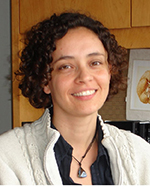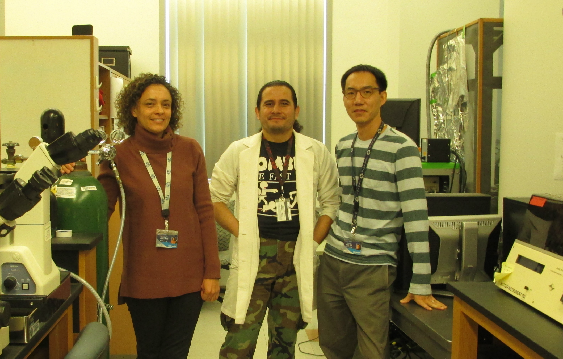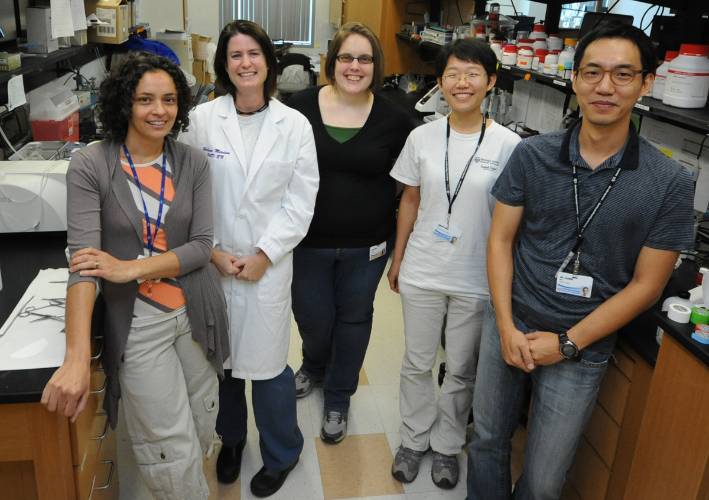 Phone: (706) 721-8901
Phone: (706) 721-8901
Fax: (706) 721-7299
Email: jfilosa@augusta.edu
Office: CA-2092
Lab: CA-2091
Learn more about Dr. Filosa's Research
2004-2007 - Research Assistant Professor, Department of Psychiatry, University of Cincinnati
2007-2008 - Assistant Professor, Department of Psychiatry, University of Cincinnati
2008-2014 - Assistant Professor, Department of Physiology and School of Graduate Studies, Medical College of Georgia
2014-2019 - Associate Professor, Department of Physiology, Medical College of Georgia, Augusta University
2019 - Professor, Department of Physiology, Medical College of Georgia, Augusta University
My major research interest is to gain understanding of the signaling mechanisms governing bi-directional communication
among the various cell types within the brain. In particularly, I am interested in
the communication between neurons and
their surrounding glial and vascular cells. Recent findings have demonstrated an
important role for astrocytes as intercellular bridges between the state of neuronal
activity and vascular dynamics (or neurovascular coupling). These findings have led to a number of different hypotheses addressing the potential
role astrocytes have in neurovascular coupling. However, major gaps in our knowledge
are still present in regards to: the nature of the signals released (both by neurons and astrocytes during the hyperemic response),the mechanisms by which astrocytes decode various degrees of neuronal activities, and the targets (ion channels and receptors) involved. Until recently, the small size and location
of parenchymal arterioles precluded us from studying the intrinsic mechanisms governing
the dynamics of these microvessels. Today’s technology allows us to explore the cellular
signals controlling parenchymal microvessels in the brain. I believe this is an important area of research that merges our basic understanding
of neuroscience with that of cardiovascular physiology. Furthermore, I believe understanding the communication between these two major systems
will increase awareness on pathologies known to show vascular and neuronal deteriorations,
including hypertension, diabetes, Alzheimer’s disease and stroke.
Major focus interest in our laboratory include:
Representative Publications
|
Yi CX, Gericke M, Krüger M, Alkemade A, Kabra DG, Hanske S, Filosa JA, Pfluger P, Bingham N, Woods SC, Herman J, Kalsbeek A, Baumann M, Lang R, Stern JE, Bechmann I, Tschöp, MH. High calorie diet triggers hypothalamic angiopathy. Molecular Metabolism 2012 (In Press). |
|
Kim KJ, and Filosa JA. Advanced in vitro approach to study neurovascular coupling mechanisms in the brain microcirculation. Journal of Physiology 2012, 590(Pt 7):1757-70. [PMID 22310311]. |
|
Filosa JA, Yao X, Rath. TRPV4 channels and the regulation of vascular tone. Journal of Cardiovascular Pharmacology 2012 (In Press). |
|
Filosa JA, Naskar K, Perfume G, Iddings JA, Biancardi VC, Vatta MS and Stern, JE. Endothelin-mediated calcium responses in supraoptic nucleus astrocytes influence magnocellular neurosecretory firing activity. J Neuroendocrinol. 2012, 24(2):378-92. PMID 22007724. |
|
Filosa, JA. Vascular tone and neurovascular coupling: considerations toward an improved in vitro model. Front Neuroenergetics. 2010, 2. pii: 16. PMID: 20802803. |
|
Higashimori H, Blanco VM, Tuniki VR, Falck JR, Filosa JA. Role of epoxyeicosatrienoic acids as autocrine metabolites in glutamate-mediated K+ signaling in perivascular astrocytes. Am J of Physiol Cell. 2010, 299 (5):C1068-78. PMID 20844244. |
|
Blanco, VM, Stern JE and Filosa JA. Tone-dependent vascular responses to astrocyte-derived signals. AJP-Heart and Circulatory Physiology 2008,294 (6):H2855-63. |
|
Sonner PM, Filosa JA and Stern JE. Diminished A-type potassium current and altered firing in renovascular hypertensive rats. J Physiol. 2008, 586.6 1605-1622. |
|
Filosa JA, Bosc-Gonzalez LV, Nelson MT. Activity-dependent NFATc3 nuclear accumulation in pericytes from cortical parenchymal microvessels. American Journal of Physiology - Cell Physiology 2007, 293(6) C1797-C1805. |
|
Filosa JA. & Blanco VM. Neurovascular coupling in the brain. Experimental Physiology 2007, 92.4, 641-646. |
Perenkita Mendiola, PhD
Postdoctoral Fellow
Adriana Langer Gramer
Research Assistant
 Pictured from left to right: Drs. Jessica Filosa, Juan Ramiro Diaz, Ki Jung Kim (2016)
Pictured from left to right: Drs. Jessica Filosa, Juan Ramiro Diaz, Ki Jung Kim (2016)
 Dr. Filosa's Lab (2013)
Dr. Filosa's Lab (2013)
